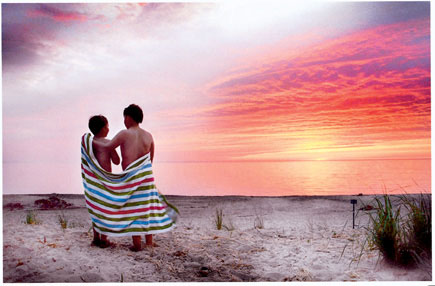Thanks for the advice, I've picked a lot of useful tips from this post. Just make sure you use zoom only for small details
Verna, play mov files free
Watch Your Exposures
As with snow on a sunny day, bright sand can fool your camera's metering
system. Nearly white sand will probably be rendered gray. Most current SLRs
and many sophisticated point-and-shoot cameras offer an exposure-compensation
feature. By using it, you can add a full stop of exposure to the automatic settings.
As with all landscape scenes, working early or late in the day will give you
the most pleasing light. The sun will be less harsh at these times, and its
low angle will provide texture and a sense of depth.
Five Tips For Shooting Beaches
· Capture expansive views.
· Look for interesting details.
· Use the Sports mode to freeze crashing waves.
· Don't let bright sand fool your meter.
· Protect your gear.
 |
|
|
Sand, Salt, And Your Camera
Always protect your camera from the elements. Bright sun, sand and salt water
can seriously damage your camera, film and accessories. You may want to invest
in an inexpensive waterproof or splashproof compact camera for use at the beach.
When using your favorite gear on windy days with blowing sand and spray from
the surf, keep your camera in a plastic bag or waterproof pack and remove it
only when taking pictures. Whether you're using memory cards or film,
always load and unload your camera in a protected place.
Send Us your photos!
Readers are encouraged to submit photos to our monthly Back To Basics feature.
Please refer to the table of contents, which lists the location of the entry
coupon and more information on monthly topics.
Lynne Eodice is an accomplished writer/photographer and a popular contributor to Photographic magazine.

Thanks for the advice, I've picked a lot of useful tips from this post. Just make sure you use zoom only for small details
Verna, play mov files free